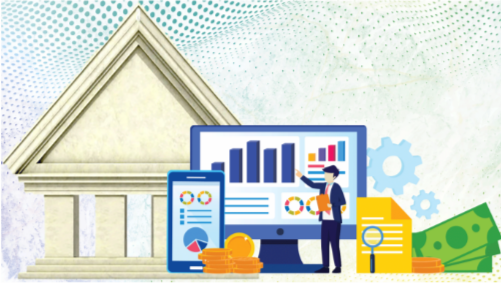TBS
Highlights:
- Strong banks cut deposit rates despite weak overall growth
- Treasury bill yields fell 187 basis points in two months
- Depositors shifting funds from weak to reputable banks
- Reputation outweighs high rates in attracting customer deposits
- Top banks enjoy surplus liquidity, prompting deposit rate cuts
- Some banks hike lending rates, especially for consumer loans
While overall deposit growth in the banking sector remains low, with clients moving funds from weaker to stronger banks, several well-positioned banks are lowering deposit rates.
Other factors are also at play: the downward trend in government treasury bill and bond yields, along with limited investment opportunities, has prompted banks with strong liquidity to cut rates, according to industry insiders.
For instance, one bank in the top 10 by deposit collection reduced its one-year FDR rate from 11% to 10.25% within two months, with further cuts expected this month.
Mohammad Ali, managing director & CEO of Pubali Bank, told TBS, “The banks receiving good deposit inflows are facing excess liquidity. With fewer investment avenues beyond treasury bills and bonds, and given the recent fall in their yields, banks are reducing deposit rates. Lower inflation is also a factor behind this adjustment.”
Central bank data shows that in mid-June this year, the 364-day treasury bill yield peaked at 12.24%, while the 15-year treasury bond touched 12.59%.
With a large share of the sector’s deposits concentrated in 8–10 banks, several of these institutions have also started increasing lending rates. Currently, strong banks charge a maximum of 13.5–13.75%
Since then, rates have dropped significantly, with the 364-day T-bill yield falling to 10.37% in the 25 August auction, while bond yields slipped below 10.30%.
In just two months, treasury yields have declined by at least 187 basis points.
During stable economic periods, deposit growth typically ranged between 11–12%. However, it was less than 8% in nine of the last twelve months, according to central bank data.
Mashrur Arefin, MD & CEO of The City Bank, told TBS, “Deposit rates are directly tied to treasury bill and bond yields. With credit demand low, banks are investing in T-bills and bonds. Since treasury yields have fallen, cutting deposit rates is inevitable. If T-bill yields are around 10%, we cannot collect deposits at 11%.”
Overall growth slowed, but top banks drew record deposits
Among the strong 10 banks in deposit collection, some achieved growth of over 30%, largely fueled by customers withdrawing funds from weaker banks post-regime change in August last year.
Not all banks are increasing lending rates. Pubali’s Mohammad Ali noted that the overall lending environment in the country is weak, and the economy is not growing fast enough. Raising lending rates now could make loans unaffordable for customers, so his bank is not following that path.
Despite offering high deposit rates of 13–14% to retain and attract customers, weaker banks continue to lose ground. Their inability to return deposits on demand, soaring non-performing loans, governance failures, and lack of trust have driven depositors toward stronger institutions.
Bankers said that, in principle, slow deposit growth should prompt banks to raise interest rates to attract funds. However, this pattern does not hold universally. In Bangladesh, reputation, governance, and brand image often matter more than the interest rate itself. As a result, strong banks continue to attract deposits even while lowering their rates.
In the first five months of 2025 (January–May), BRAC Bank posted the highest deposit growth among private banks, followed by Islami Bank, Dutch-Bangla Bank, United Commercial Bank (UCB), Pubali Bank, The City Bank, IFIC Bank, Jamuna Bank, Bank Asia, and Dhaka Bank.
A deputy managing director of a leading private bank said depositors now prefer strong banks, leaving them with surplus liquidity due to weak loan demand. This has prompted top banks to cut deposit rates.
“Even after lowering rates, customers will come to strong banks because of the reputation. Most new deposits are concentrated in a few banks, giving them the advantage to set rates. Higher-rate deposits could become a long-term burden,” he noted.
Deposit rates cut, lending hiked
With a large share of the sector’s deposits concentrated in 8–10 banks, several of these institutions have also started increasing lending rates. Currently, strong banks charge a maximum of 13.5–13.75%.
For example, one of the top banks in deposit collection has raised its lending rates by 50–75 basis points this year. While corporate lending rates saw little change, interest rates on high-demand consumer products such as personal loans, auto loans, and home loans were increased.
A DMD of the bank explained that rising NPLs reduced lending capacity for most banks. Even though overall loan demand is low, strong banks continue to see customer interest in borrowing. To manage this pressure and balance with other banks, lending rates have been slightly increased.
Not all banks are increasing lending rates. Pubali’s Mohammad Ali noted that the overall lending environment in the country is weak, and the economy is not growing fast enough. Raising lending rates now could make loans unaffordable for customers, so his bank is not following that path.

